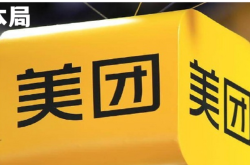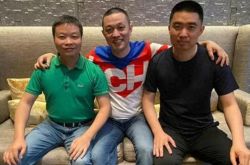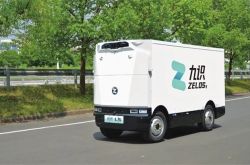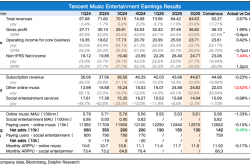Cashing In on a Whopping US$4.15 Billion! Masayoshi Son Offloads NVIDIA Holdings, Unveiling Surprising Signals
![]() 11/13 2025
11/13 2025
![]() 563
563
This October, 68-year-old Masayoshi Son, the founder of SoftBank, cashed out all his holdings (32.1 million shares) in NVIDIA at its peak.
This move netted him a staggering US$5.83 billion (roughly RMB 41.5 billion) in cash.
While Masayoshi Son is overjoyed, NVIDIA is less than thrilled. Following SoftBank's announcement, NVIDIA's market capitalization plummeted by US$100 billion overnight.
NVIDIA may be unhappy, but OpenAI is elated.
SoftBank subsequently declared its intention to reinvest the proceeds from the NVIDIA sale, along with those from offloading a portion of its US$9.17 billion stake in T-Mobile (Deutsche Telekom), into an even grander AI venture—OpenAI.
By selling NVIDIA shares and investing in OpenAI, Masayoshi Son adheres to a consistent strategy: investing in the computing platforms of the future, which encompass artificial intelligence.
Originally, this position was held by NVIDIA. Now, it has shifted to OpenAI.
Optimism isn't just about words; it's about substantial investments.
In March, SoftBank agreed to spearhead a financing round for OpenAI, potentially reaching up to US$40 billion. In October, SoftBank's board sanctioned a second investment of US$22.5 billion in OpenAI. By the end of December this year, SoftBank's cumulative investment in OpenAI is projected to hit US$34.7 billion.
He also forecasted that OpenAI would eventually go public and "become the most valuable company globally."
Masayoshi Son's "forecast" isn't a spur-of-the-moment decision. According to Reuters, OpenAI is contemplating an initial public offering (IPO) valued at up to US$1 trillion as early as next year, which would yield substantial returns for investors like Microsoft and SoftBank.
Masayoshi Son's stance, as evidenced by his substantial investments, is unequivocal: betting on software over hardware. He envisions that in the next decade, "entire AI systems" will generate more value than individual chips.
The specific objective of the ecosystem constructed by SoftBank is to secure a significant market share across the entire AI value chain—from the foundational intellectual property of semiconductor architectures to the supercomputing infrastructure underpinning advanced models, and culminating in the terminal intelligence layer of enterprise-level AI applications (this point is crucial, so emphasize it).
SoftBank's AI strategy rests on three interconnected pillars:
1. Hardware
The cornerstone is its controlled subsidiary, Arm Holdings—a chip design firm renowned for its energy-efficient architectures, which are emerging as the foundational bedrock of AI computing power, spanning from edge computing to data centers.
SoftBank is expediting the reinforcement of this layer by acquiring specialized chip companies like Ampere Computing and Graphcore.
Arm's enduring advantage lies in its energy-efficient architectural design, a feature that becomes increasingly vital in an era of escalating AI computing energy demands.
Ampere supplies the high-performance, low-power computing "muscle" essential for running large-scale AI models, thereby complementing Arm's ecosystem.
Graphcore's developed Intelligence Processing Units (IPUs) are tailored for AI training.
This creates a "closed computing power ecosystem" dominated by SoftBank, aiming to diminish reliance on NVIDIA and seize control over the critical hardware lifeblood of the AI era.
2. Infrastructure
This pillar is embodied in highly ambitious, capital-intensive projects: including the US$500 billion supercomputing initiative, the "Stargate Project," in collaboration with OpenAI and Oracle, as well as the envisioned US$1 trillion "Project Crystal Land."
The so-called Project Crystal Land entails the construction of an AI and robotics industrial cluster with a total investment of up to US$1 trillion in Arizona, USA. SoftBank's acquisition of ABB's robotics division for approximately US$5.4 billion is also viewed as part of this grand scheme.
Masayoshi Son aspires to recreate a Shenzhen-like ecosystem in Arizona, amalgamating the entire AI supply chain—from design to manufacturing—within a single high-density innovation park. This includes advanced chip manufacturing in collaboration with TSMC, AI model training bases, and automated assembly lines for intelligent robots.
This will evolve into the "industrial hub" of SoftBank's AI empire, a mega-ecosystem encompassing chip manufacturing, computing power, and robotics.
3. Intelligence Layer
The core is a strategic cooperation with OpenAI, potentially worth up to US$40 billion. SoftBank intends to leverage its "Cristal Intelligence" enterprise-level AI platform to widely deploy OpenAI's capabilities across its global investment portfolio, driving the widespread adoption of business intelligence. This isn't a traditional investment relationship but a symbiotic strategic alliance.
This investment comes with a highly contentious yet pivotal condition: OpenAI must transition from its current non-profit governance structure to a for-profit entity. This requirement aims to align OpenAI's governance with SoftBank's commercial return objectives but has also ignited complex negotiations with other shareholders (particularly Microsoft).
The ultimate success or failure of SoftBank's AI grand plan hinges on the synergistic operation of these three pillars. Any failure in one link, particularly a collapse at the foundational hardware level, could precipitate a chain reaction throughout the entire system.
Within this framework, the acquisition of Ampere is perceived as a critical linchpin supporting SoftBank's overall strategy.
If U.S. regulators reject the deal on antitrust grounds—akin to the failed NVIDIA acquisition of Arm—SoftBank will forfeit the most crucial "muscle layer" in its vertical integration of hardware and software.
This would compel SoftBank to depend on competitors (such as NVIDIA) for the chips required to power the data centers for the "Stargate Project," completely undermining its core rationale for a "self-owned, dominant, closed AI ecosystem." Hence, the outcome of the U.S. Federal Trade Commission's investigation into this deal will emerge as a pivotal turning point for Masayoshi Son's AI vision.
Finally, to comprehend Masayoshi Son's spending tactics, one must grasp his investment philosophy.
Since SoftBank's inception, Masayoshi Son has invested in "long-term technologies with the potential to transform the world." The most iconic example is his bet on Alibaba in 2000, which yielded a US$58 billion profit upon its 2014 IPO.
Masayoshi Son posits that technological evolution has traversed three major waves: personal computers → the Internet → the mobile era. Today, AI represents the logical extension of this trajectory—but on a scale and with ambition that far surpasses previous eras.
Masayoshi Son isn't merely betting on the short-term applications of generative AI; he's anticipating the arrival of artificial general intelligence (AGI)—AI with human-equivalent intelligence—and shortly thereafter, the evolution into artificial superintelligence (ASI)—an entity whose intelligence will dwarf the combined intellect of humanity by 10,000 times.
Do you have faith in Masayoshi Son?
This article does not constitute any investment advice.





